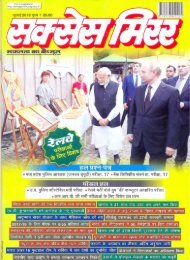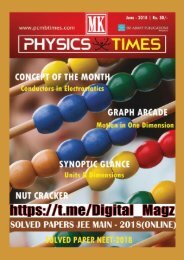National geographic
Create successful ePaper yourself
Turn your PDF publications into a flip-book with our unique Google optimized e-Paper software.
FROM THE EDITOR<br />
When studying history, historians look to the<br />
facts. Knowing names, dates, and places helps explain past events, but there<br />
is often another factor whose influence remains intangible: luck.<br />
Fate’s role in major events cannot be denied, and perhaps no ruler<br />
understood that more than Queen Elizabeth I. Chance decreed that<br />
Elizabeth’s mother, Anne Boleyn, would not give birth to a son, which<br />
soured her young daughter’s luck. Elizabeth’s mother was executed, her<br />
half brother declared her a bastard, and her half sister threw her in prison.<br />
Elizabeth survived this series of unfortunate events to become queen, and<br />
England entered a golden age, one that included the defeat of the Spanish<br />
Armada, a victory often credited to Elizabeth’s good luck rather than her<br />
good strategy.<br />
Despite her successes, it seems that Elizabeth I never forgot how one’s luck<br />
could turn. Tradition says that the queen always wore a locket ring (above)<br />
until her death in 1603. On the outside was the letter E in diamonds. On<br />
the inside were two portraits—one of Elizabeth herself and the other of her<br />
mother, whose visage she kept close to her, perhaps to remind her of the<br />
broad consequences of a simple twist of fate.<br />
Amy Briggs, Executive Editor<br />
NATIONAL GEOGRAPHIC HISTORY 1
















